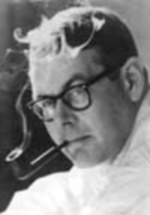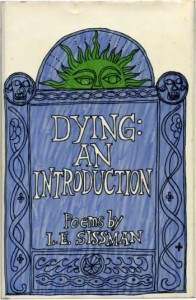 In today’s Wall Street Journal “Sightings” column I pay tribute to the American poet L.E. Sissman. Here’s an excerpt.
In today’s Wall Street Journal “Sightings” column I pay tribute to the American poet L.E. Sissman. Here’s an excerpt.
* * *
Now that the baby boomers, who are accustomed to talking in public about every aspect of their private lives, are approaching the end of their long run in the spotlight, it’s becoming more and more common to read first-person narratives by writers of all ages about what it feels like to suffer from a terminal illness. Not surprisingly, some people squirm at the thought of reading about such things, and a few actually seem to regard them as inappropriate for general consumption. Earlier this year, Emma Keller wrote a column for the Guardian in which she attacked Lisa Bonchek Adams, a blogger and mother of three who is also a stage-4 cancer patient, suggesting that her courageous postings and tweets were “a grim equivalent of deathbed selfies.” Bill Keller, Ms. Keller’s husband, backed up his spouse in a New York Times column that dismissed Ms. Adams as “the standard-bearer for an approach to cancer…that may raise false hopes.”
If, like me, you’re an admirer of the writings of such bloggers as Ms. Adams and D.G. Myers, a literary critic who is chronicling his own experiences with prostate cancer, you will doubtless find what the Kellers wrote to be—to put it very, very gently—insensitive. But in my own case, it also put me in mind of a near-forgotten American poet of great gifts whose subject matter included the prospect of his own fast-approaching death.
 L.E. Sissman isn’t even a name to most modern-day readers, but a modest number of people can recall his brief vogue, which lasted for a bit more than a decade. Sissman, known to his friends as “Ed,” was an advertising man from Boston who in his spare time wrote poems, book reviews, and familiar essays that appeared regularly in the Atlantic and the New Yorker between 1964 and his death in 1976. He learned in 1965 that he had Hodgkin’s disease, and his first book of poems, “Dying: An Introduction,” which came out in 1968, is most striking—harrowing, in fact—when it deals with the illness that killed him at the unripe age of 48…
L.E. Sissman isn’t even a name to most modern-day readers, but a modest number of people can recall his brief vogue, which lasted for a bit more than a decade. Sissman, known to his friends as “Ed,” was an advertising man from Boston who in his spare time wrote poems, book reviews, and familiar essays that appeared regularly in the Atlantic and the New Yorker between 1964 and his death in 1976. He learned in 1965 that he had Hodgkin’s disease, and his first book of poems, “Dying: An Introduction,” which came out in 1968, is most striking—harrowing, in fact—when it deals with the illness that killed him at the unripe age of 48…
Cancer was discussed frankly in print far less often when the title poem of “Dying: An Introduction” appeared in the New Yorker in 1967, which is one reason why Sissman’s work was so widely noticed at the time. But his modest renown didn’t outlive his death, and not even the posthumous publication of “Night Music,” a collection of his poetry that came out in 1999, was able to restore it.
Yet Sissman’s poems are both stunning and disquieting. Their crisply rhyming iambs were a perfect embodiment of the highly individual sensibility of a poet-businessman who looked his fate in the eye without blinking. In “A Deathplace,” for instance, he envisioned his ultimate demise: “Then one fine day when all the smart flags flap,/A booted man in black with a peaked cap/Will call for me and troll me down the hall/And slot me into his black car. That’s all.” That seems to me at least as good as Aubade, Philip Larkin’s 1977 poem about his fear of death, not to mention braver. Like all of Sissman’s best poems, it’s utterly free of sentimentality and (unlikely as it may sound) coolly witty in its unswerving acceptance of the inevitability of the dark encounter that awaits us all….
* * *
Read the whole thing here.
To order a copy of Night Music, go here.
To hear Sissman read his poetry at Canada’s Sir George Williams University in 1972, go here.
